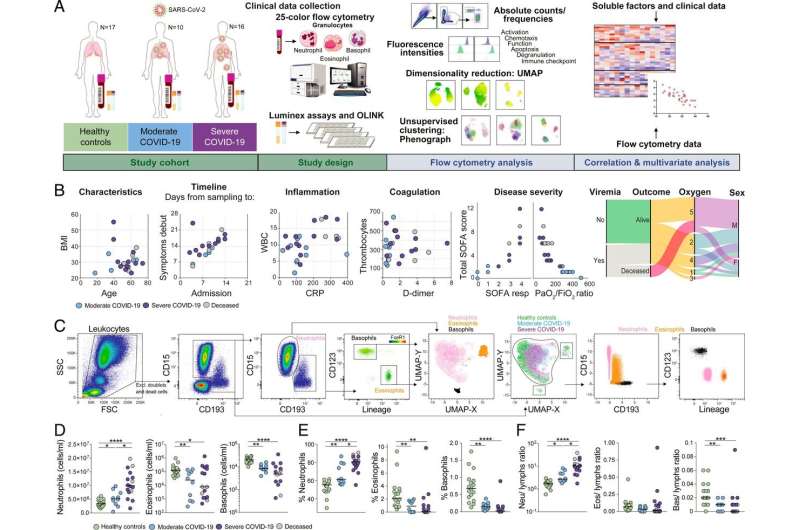Innate immune response may predict COVID-19 severity

COVID-19 disease severity seems to be affected by the characteristics of white blood cells called granulocytes, which are part of the innate immune system. Combined measurements of granulocytes and well-known biomarkers in the blood can predict the severity of the disease, according to a new study from Karolinska Institutet. The results are published in the journal PNAS and may eventually contribute to more tailored treatments for COVID-19 patients.
Granulocytes are a family of white blood cells that include neutrophils, eosinophils and basophils. They are part of the so-called innate immune system, which is the body's first line of defense against pathogens. There are many studies on how SARS-CoV-2 affects various components of the immune system, but there is still a lack of knowledge about the role of granulocytes in COVID-19.
Researchers at Karolinska Institutet have now investigated the characteristics of granulocytes in the blood during the early phase of SARS-CoV-2 infection in a total of 26 hospitalized patients with COVID-19 at the Karolinska University Hospital. They also performed follow-up analyses four months after hospital discharge and compared these with analyses of healthy uninfected individuals.
Significantly altered characteristics
"Our study shows significantly altered characteristics of all granulocyte subsets in COVID-19 patients and this can be linked to the severity of the disease," says lead author Magda Lourda, who is a researcher at the Department of Medicine, Huddinge, at Karolinska Institutet.
Combined measurements of granulocyte characteristics and widely used biomarkers in the blood called C-reactive protein (CRP) and creatinine, could predict key clinical features such as respiratory function and multiorgan failure.
"The finding needs to be taken with caution considering the limited size of our study cohort, but our hope is that these combined measurements can be used to predict the severity of the disease, resulting in more tailored treatments for COVID-19 patients," says Magda Lourda.
More information: Magda Lourda et al, High-dimensional profiling reveals phenotypic heterogeneity and disease-specific alterations of granulocytes in COVID-19, Proceedings of the National Academy of Sciences (2021). DOI: 10.1073/pnas.2109123118



















